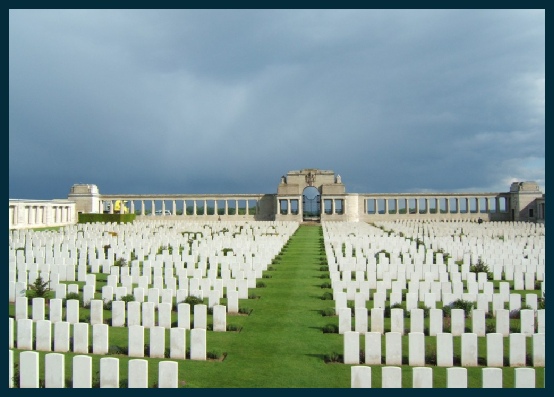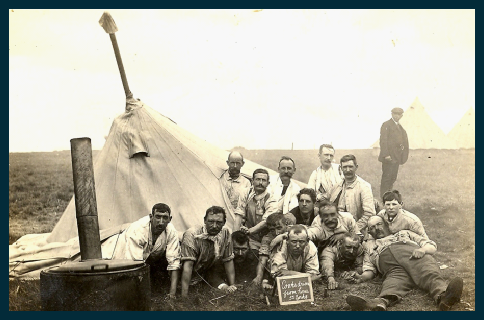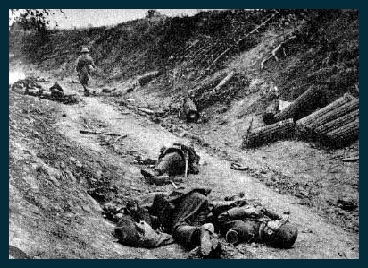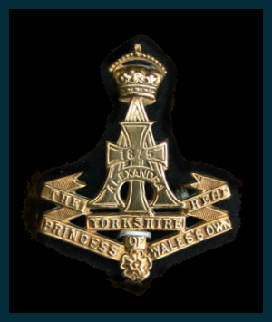Copyright © All rights reserved.



Harold Gibson

By the outbreak of war, Harold was living at View Terrace, Middlecave Road, and was a member of H. Company of the 5th Battalion of the Yorkshire Regiment. It would also seem that he was a member of Malton Methodist Church as he is also commemorated on the war memorial at Saville Street Church.
At the outbreak of war the men of the 5th Battalion left Malton immediately as recorded by the Malton Messenger of 5th August 1914.
DEPARTURE OF MALTON TERRITORIALS
REMARKABLE SCENES
Scenes which will be long remembered by the inhabitants of the town were witnessed in Malton on Wednesday, when the Territorials (“H” Company 5th Battalion Alexandra Princess of Wales’ Own Yorkshire Regiment) marched from the headquarters in Old Maltongate to the railway station. The men quickly responded to the call and were ready on Tuesday night. Many of them were in the streets until a late hour, mingling with the crowds which gathered near the Messenger office and other parts of the town. It was at first understood that they would leave for an unknown destination at 8.30 on Wednesday morning, and the streets presented a busy scene; gradually, however, it became known that they were to leave at 12.30, and long before that time the streets from the headquarters in Old Maltongate to the Railway Station were lined with people who were eagerly discussing the grave crisis.
About half-
It was impossible to admit all the followers into the station but a large number succeeded in in gaining admission, mostly those who had relatives in the ranks. The men were very cheerful, and there was a good deal of hand-
In the brief interval a representative of the “Messenger” held a conversation with Lieutenant Pickles who stated that they were going on to Scarborough to await orders.
At about 10 minutes to one o’clock the train arrived, and after more hand-
The 1/4th and the 1/5th Battalions of the Yorkshire Regiment were both in the 150th Brigade of the 50th [Northumbrian] Division and their activities in the First World War were very similar. Both Battalions went to same areas at the same time and fought in the same Battles -
They were known as the Scarborough or Beverley "Terriers" and originally these two towns, along with neighbouring Driffield, Malton, Pickering, Bridlington, Filey etc provided the Volunteers.
Such were the losses during the War that the personnel of both Battalions changed several times. National conscription was introduced at the beginning of 1917. Bulk transfers were sometimes made from one Battalion to another. The Battalion that was decimated on the Aisne in May 1918 was, therefore, unrecognisable from the one that had embarked for France in April 1915 and had by then lost the biggest part of its purely local attachment.
In 1915 the Battalion became part of 150th Brigade, 50th (Northumbrian) Division. In early April the Division was warned that it would go on overseas service and entrainment began on 16 April, landing at Boulogne. By 23 April the Division had concentrated in the area of Steenvoorde. It had arrived just as the German army had attacked at nearby Ypres, using poison gas for the first time, and was rushed into the battle. The Division then remained in France and Flanders and took part in the Second Battle of Ypres.
In February 1916 the 5th were in trenches in the Ypres Salient until 12th February when they were relieved by 4th East Yorkshires and went into close support. Through the Spring of 1916 they continued to alternate between trenches and support sustaining a constant stream of casualties and losses, first around Ypres and then at Kemmel.
In August, the 5th Battalion was moved to the Somme area and after a few weeks of rest and training left Millencourt on 5th September for the Trenches in front of Bazentin Le Petit where they sustained dreadful losses. After the carnage of September, the Battalion moved into billets in October to re-
The beginning of 1917 saw the battalion moved to Arras and there sustaining further heavy losses. Through August and September they continued to undergo heavy bombardment and regular severe casualties.
In October, the battalion was moved to the Ypres Salient and after a period of training found themselves again on the front line, sustaining heavy losses at the end of the month. This pattern continued in November, with a carefully structured training programme of fitness, musketry, specialist disciplines (gas, bombing etc) and of course drill. December saw them alternating between support and frontline, continuing to lose men both to enemy action and disease. January saw them alternating support and training before a return to the front line in February.
The Russian Revolution and that country's subsequent withdrawal from the War in the East had allowed the Germans to transfer troops to the Western Front. On the 21st of March 1918 they were ready to launch 76 Divisions against the 28 of the Allies along a 50 mile Front in the St Quentin area, presumably to split the British and French Armies, capture the Channel ports and thus cut off the British Army and prevent further landings. The news that America had belatedly entered the War meant they had to take decisive action before they were outnumbered. The 5th Yorkshire Battalion were thrown right into the centre of this onslaught. Each side would lose around a quarter of a million men.
The beginning of March saw the Battalion resting and training first at Setques and then at Demuin. On Thursday 21st, they received a warning order to be prepared to move at 4 hours notice and went by train to Brie and marched to Hancourt. Here they dug in on the morning of the 22nd and about 11.00 pm orders were received to withdraw from the position to a line from Cemetery Vraignes to the wood and they dug in at this position, with 4th East Yorks on Right, 8th DLI on Left and 4th Yorks in Support.
Harold Gibson was born in the third quarter of 1885 and his birth registered in Malton. He was the eldest son of George Gibson and Emma (nee Taylor) who married in the last quarter of 1884 and presumably met while she was working as a domestic servant in Middlecave Road. It is strange that they married at Scarborough – possibly she was in service there by that time.
By 1891 George and Emma had four children and had moved to Holbeach where George was working as a tailor.
1891 Census – resident at Church Street, Holbeach, Lincolnshire
GIBSON, George, Head, Married, M, 33, Tailor, Malton Yorkshire,
GIBSON, Emma, Wife, Married, F, 26, , Baldersby Yorkshire,
GIBSON, Harold, Son, , M, 5, Scholar, Old Malton Yorkshire,
GIBSON, Arthur, Son, , M, 4, Scholar, Old Malton Yorkshire,
GIBSON, Fred, Son, , M, 3, , Old Malton Yorkshire,
GIBSON, Son, , M, 8 days, , Holbeach Lincolnshire,
?, Mary Ann, Servant, Single, F, 55, Sick Nurse, Whaplode Lincolnshire,
They had moved back to the Malton area by 1901 and George and Emma were living in Norton with their four younger children while Harold had moved to live and work with his uncle in Pickering. Thomas Pape was married to Jane Gibson, George Gibson’s sister.
1901 Census – resident at Burgate, Pickering
PAPE, Thomas, Head, Married, M, 47, Tobacconist Shopkeeper & Sauce Manufacturer, Burnby Yorkshire,
PAPE, Jane, Wife, Married, F, 46, , Malton Yorkshire,
PAPE, Easter A, Niece, Single, F, 18, , Pickering Yorkshire,
GIBSON, Harold, Nephew, Single, M, 15, Tobacconist's Assistant, Malton Yorkshire,
SIMPSON, Robert A, Boarder, Single, M, 19, Commercial Clerk, Hutton Buscel Yorkshire,

Harold married Annie Wilson in the third quarter of 1906. They had two children; Doris, born in the third quarter of 1907 and William Welford born in the last quarter of 1909. William died in the Buckrose area in the first quarter of 1947 aged 55.
By 1911 the Gibsons were living in Chancery Lane and Harold was working as an auxiliary postman as well as in the tailoring industry (probably for his father) and on 14th November 1912 there is a record of Harold Gibson (Malton) gazetted as Postman (London Gazette)
1911 Census – resident at 9 Chancery Lane, Malton
GIBSON, Harold, Head, Married, M, 25, Auxiliary Postman and Tailor Maker – letter carrier, Malton Yorkshire,
GIBSON, Annie, Wife, Married 4 years, F, 26, , Norton Yorkshire,
GIBSON, Doris, Daughter, , F, 3, , Malton Yorkshire,
GIBSON, William Welford, Son, , M, 1, , Norton Yorkshire,
WILSON, Harry, Boarder, Married, M, 56, Foreman House Painter, Norton Yorkshire,

At 8.00 am on 23rd they received orders to withdraw along main Mons-
It was during the course of this action on 25th March 1918 that Sergeant Harold Gibson was killed.
His body was not recovered and he is commemorated on the Pozieres Memorial.
Harold is commemorated on the memorials in St Michael’s Church, Malton, St Peter’s Church, Norton and in Saville Street Methodist church as well as the town memorial.
